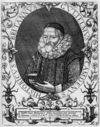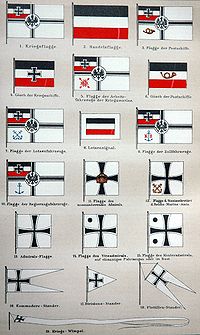Portal:Heraldry
Welcome to the Heraldry and Vexillology Portal!


Heraldry encompasses all of the duties of a herald, including the science and art of designing, displaying, describing and recording coats of arms and badges, as well as the formal ceremonies and laws that regulate the use and inheritance of arms. The origins of heraldry lie in the medieval need to distinguish participants in battles or jousts, whose faces were hidden by steel helmets.
Vexillology (from the Latin vexillum, a flag or banner) is the scholarly study of flags, including the creation and development of a body of knowledge about flags of all types, their forms and functions, and of scientific theories and principles based on that knowledge. Flags were originally used to assist military coordination on the battlefield, and have evolved into a general tool for signalling and identification, particularly identification of countries.
Selected biography

William Camden (May 2, 1551–November 9, 1623) was an English antiquarian and historian. He wrote Britannia, the first topographical survey of the island of Great Britain, and Annales, the first detailed historical account of the reign of Elizabeth I of England. In 1597 he was appointed Clarenceux King of Arms to facilitate his research, the post carrying a salary, and the College of Arms at the time being a centre of antiquarian studies. The appointment, however, roused the jealousy of the herald Ralph Brooke, who in retaliation published an attack on Britannia, charging Camden with inaccuracy and plagiarism. Camden successfully defended himself against the charges in subsequent editions of the work. (more...)
Selected coat of arms

In heraldry, the Royal Arms of England is a coat of arms symbolising England and its monarchs. Its blazon (technical description) is Gules three lions passant guardant in pale Or armed and langued Azure, meaning three identical gold lions with blue tongues and claws, walking and facing the observer, arranged in a column on a red background. This coat, designed in the High Middle Ages, has been variously combined with those of France, Scotland, Ireland, Nassau and Hanover, according to dynastic and other political changes affecting England, but has not itself been altered since the reign of Richard I. (more...)
Selected flag

The Royal Standard of Scotland, also known as the Banner of the King of Scots or more commonly the Lion Rampant of Scotland, is the Scottish Royal Banner of Arms. Used historically by the King of Scots, the Royal Standard of Scotland differs from Scotland's national flag, The Saltire, in that its correct use is restricted by an Act of the Parliament of Scotland to only a few Great Officers of State who officially represent The Sovereign in Scotland. It is also used in an official capacity at Royal residences in Scotland when the Sovereign is not present.
The earliest recorded use of the Lion rampant as a Royal emblem in Scotland is by Alexander II in 1222. This emblem occupied the shield of the Royal coat of arms of the ancient Kingdom of Scotland which, together with a Royal banner displaying the same, was used by the King of Scots until the Union of the Crowns in 1603, when James VI acceded to the thrones of the Kingdom of England and Kingdom of Ireland. The Lion Rampant of Scotland can be seen today in the Royal Standard of the United Kingdom. (more...)
Selected picture

Flags used by the German Kaiserliche Marine (Imperial Navy), 1892.
Did you know...
- ...that Garter King of Arms William Segar (pictured) was imprisoned for confirming a coat of arms to someone who was not a gentleman?
- ...that Themba Mabaso, the State Herald of South Africa (pictured), also wrote a children's book?
- ...that the coat of arms of Montenegro derives from that of King Nikola?
- ...that the current flag of Bhutan was introduced after it was noticed the previous square version didn't flutter like the flag of India?
- ...that heraldic badges were common in the Middle Ages, particularly in England?
Related portals
|
|
|
Heraldry Web resources
Authorities
- Belgium - The Council of Nobility, Flemish Heraldic Council and Council of Heraldry and Vexillology of the French Community
- Canada - Canadian Heraldic Authority and see also Public Register of Arms, Flags and Badges
- England, Wales, and Northern Ireland - The College of Arms
- Ireland - The Office of the Chief Herald of Ireland
- Netherlands - High Council of Nobility
- Portugal - Instituto da Nobreza Portuguesa
- Scotland - The Court of the Lord Lyon
- South Africa - South African Bureau of Heraldry
- Sweden - National Board of Heraldry, The National Archive
- United States Army - The United States Army Institute of Heraldry
Societies
- Greek Heraldry Society
- The Academy of Heraldic Science Czech republic
- The American College of Heraldry
- The American Heraldry Society
- The Augustan Society
- The Australian Heraldry Society Inc.
- Bulgarian Heraldry and Vexillology Society
- The Center for Research of Orthodox Monarchism
- Cambridge University Heraldic and Genealogical Society
- Chiltern Heraldry Group
- The College of Dracology
- Croatian Heraldic and Vexillologic Association
- The Finnish Heraldic Society
- Fryske Rie foar Heraldyk
- Hellenic Armigers Society
- Guild of Heraldic Artists
- Genealogical Society of Ireland
- Heraldry Research Institute (Japan)
- The Heraldry Society
- The Heraldry Society of Africa
- The Heraldry Society of New Zealand Inc.
- The Heraldry Society of Scotland
- The Heraldry Society of Southern Africa
- The Institute of Heraldic and Genealogical Studies
- The International Association of Amateur Heralds
- Italian Center of Vexillological Studies
- Lancashire Heraldry Group
- Macedonian Heraldry Society
- New England Historic Genealogical Society Committee on Heraldry
- Norwegian Heraldry Society
- Oxford University Heraldry Society
- Polish Heraldry Society
- Polish Nobility Confederation
- Real Academia Matritense de Heráldica y Genealogía - Royal Academy of Heraldry and Genealogy of Madrid
- Romanian Institute for Genealogy and Heraldry
- The Royal Heraldry Society of Canada
- The Russian College of HeraldryThe Russian College of Heraldry
- Serbian Heraldic Society
- Societas Heraldica Scandinavica
- Societas Heraldica Slovenica
- Swedish Heraldic Society
- Ukrainian Heraldry Society
- Royal Association Genealogical and Heraldic Office of Belgium
Vexillology
Software
- Coat of Arms Visual Designer web-based program
- Puncher Heraldry Program
- Blazonry Server - pyBlazon
- DrawShield - creates SVG shield or arms image from blazon
- CoaMaker - web-based tool
- Blazon95 and BLAZONS! 2000, older Windows applications
Texts
- Heraldry, historical and popular : with seven hundred illustrations (1863)
- A Complete Guide to Heraldry (1909)
Other
Wikimedia
The following Wikimedia Foundation sister projects provide more on this subject:
-
Commons
Free media repository -
Wikibooks
Free textbooks and manuals -
Wikidata
Free knowledge base -
Wikinews
Free-content news -
Wikiquote
Collection of quotations -
Wikisource
Free-content library -
Wikispecies
Directory of species -
Wikiversity
Free learning tools -
Wikivoyage
Free travel guide -
Wiktionary
Dictionary and thesaurus












